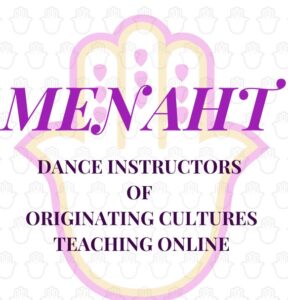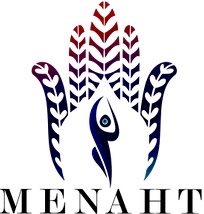
What is MENAHT? It’s an acronym for Middle Eastern, North African, Hellenic (Greece) and Turkish. And, whether intended or not, it’s become a marketing catch-phrase that implies ‘if you don’t learn from a dancer from ‘x’ country, you can’t ever properly learn ‘y’ dance.’
What dismays me is I’ve heard this mantra repeatedly used from dance instructors who did not learn from a MENAHT instructor, yet now they are advertising this is the best way to learn. But, have things really changed from how we Western dancers have historically learned?
Let’s dissect this a bit. I’m fully aware of the discussions of cultural appropriation, this post is not intended to diminish that reality. For my generation of dancers, we have historically viewed this as cultural appreciation, not appropriation. I’ve been extremely fortunate to study with many incredibly giving and knowledgeable MENAHT instructors over my 25+ year dance career. Many have had a spirit of scholarship and research when it comes to dances specific to their native culture, and they have taken the time to ensure I know the cultural reasons for the dance moves and costuming.
So What's The Issue?
What has changed is the repackaging and renaming of the learning process and the way it’s being marketed. But can any instructor convey the important cultural context of a dance in a way that can be internalized by participants in an hour-long class or weekend workshop? If so, how did we all learn before there were MENAHT instructors so readily available online? Is our knowledge and expertise from years of study no longer valid because we are not of the native cultures we have studied and internalized? It’s is my belief that finding a quality instructor, regardless of where they’re from, outweighs their national affiliation.
I’ve experienced some MENAHT instructors who have made up stories about their culture’s connection to certain dances, stories that research does not support, because they do not know it. This is a slippery slope not only for the instructor, but also for their students who will pass on inaccurate information as truth. Conversely, I have studied with instructors from non-MENAHT homelands who have immersed themselves in learning not only dances, but history, nuance, and language of the cultures from which these dances emerge. In short, research your instructors you’ve chosen to learn from beyond looking solely at their country of origin.

Why Is Cultural Context So Important to The Dances?
The cultural knowledge helps us choose accurate costuming, select moves appropriate to the lyrics and feeling of the dance, and develop choreography that accurately conveys the meaning of the dance with our audiences. There are Western dancers who know more about these cultural connections than some dancers of the country of origin. This knowledge was gained by many long hours outside the dance studio with our native mentors. We learned as much as we could during our travels to the country of origin…learning the language so we could understand the song lyrics, studying modern and traditional costuming, conversing late into the night over pots of tea, and taking copious notes. We did this to bring the context of the dances back to our students.
To Recap To be a Western dancer teaching and performing dances from the Middle Eastern countries, it is incumbent upon us to learn more than just the moves to accurately present the entire dance story to our audiences. We are not saying we ‘know it all’, but we are conveying what we have learned from our studies inside and outside the dance studio from our mentors. Sometimes the best source of cultural information is a MENAHT instructor … and sometimes you will have access to a local source with years of experience in the culture and the dance. In short, do your research before getting swept up in the Western marketing hype – research your instructors so you can make an informed decision to get the most out of your class or registration fee, and to do justice to the dances we love.
